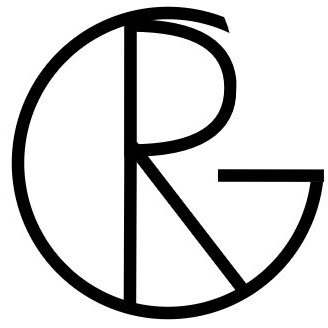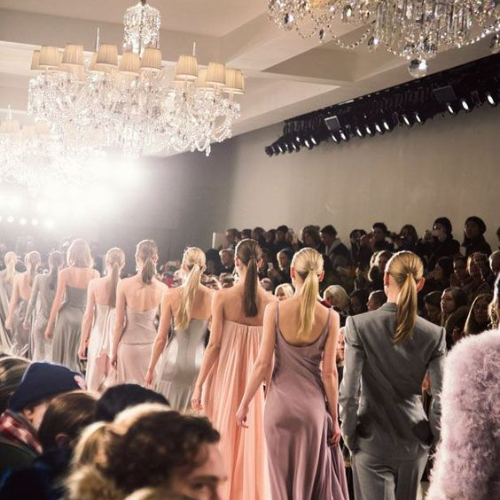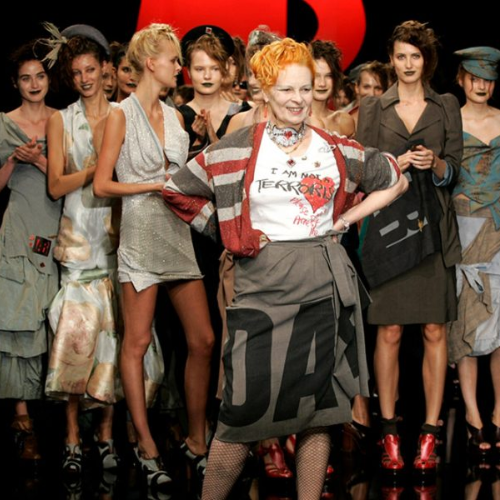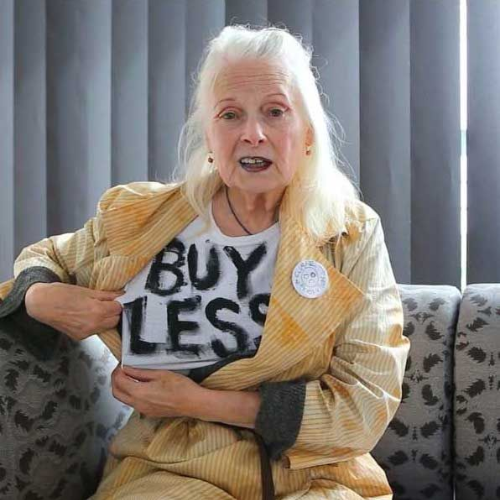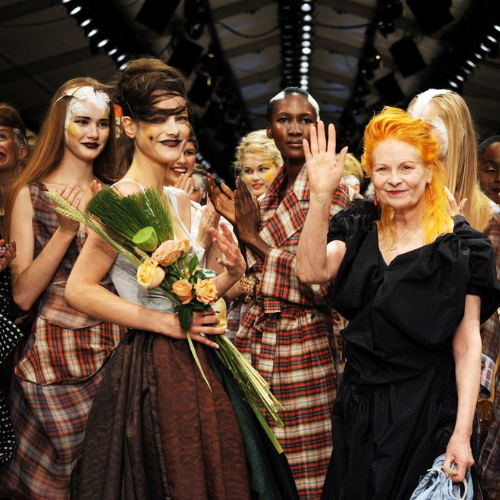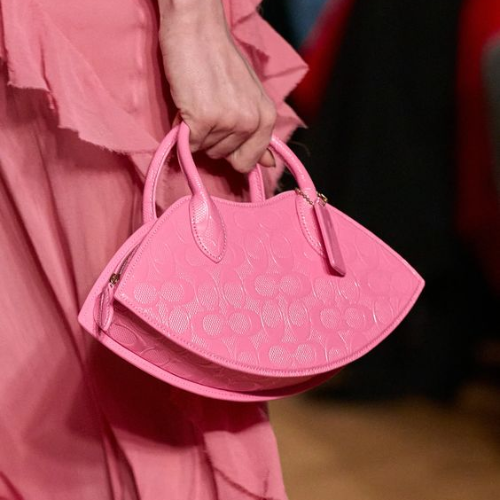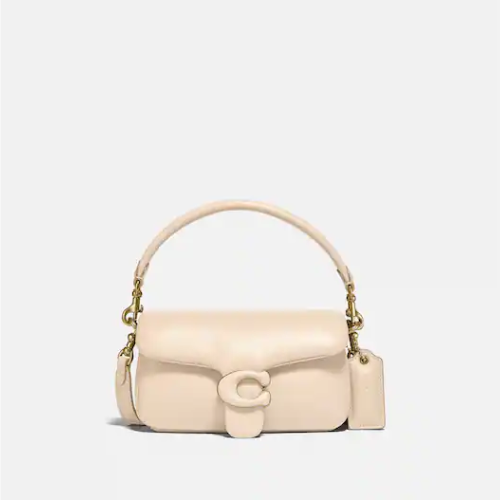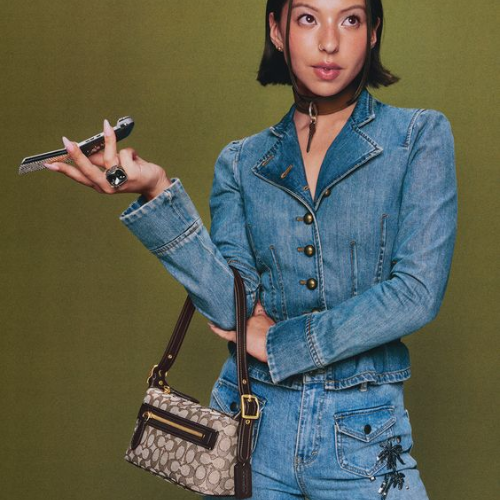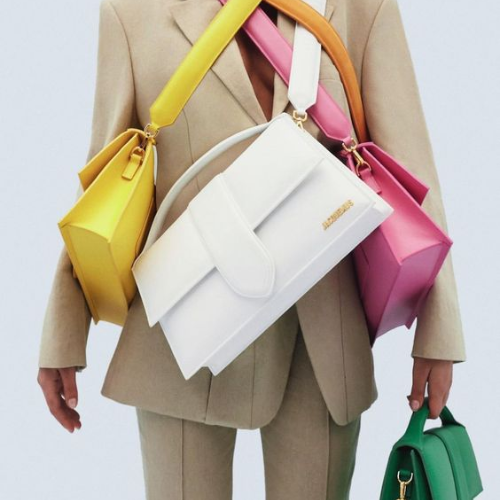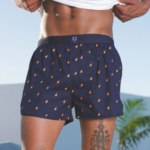September is the month when high fashion brands show their new Spring/Summer ‘24 collections on the runway during several fashion weeks.
So what better time than now to post the fourth blog post in my series “High Fashion: The Sustainability Initiatives Of…” with this edition, including high fashion brands Vivienne Westwood, Coach, and Jacquemus.
Vivienne Westwood
Vivienne Westwood has been an emblem of rebellion and artistic expression for over half a century. This iconic fashion brand, founded by British designer Dame Vivienne Westwood, has left an indelible mark on the fashion industry. She was inspired by the acts of rebellion and punk in the 1950s and opened her first boutique with her then-partner Malcolm McLaren on London’s King’s Road named “Let It Rock” in 1971. The pair initially specialized in rock ‘n’ roll fashion, but they quickly transitioned to a new era of design, becoming pioneers of the punk movement. This shift laid the foundation for Vivienne Westwood’s distinctive style. Over the years, her designs fused British heritage, punk aesthetic, and couture craftsmanship.
Sadly, Vivienne Westwood passed away last year on the 29th of December at age 81, leaving a legacy behind.
Vivienne Westwood was a tireless advocate for environmental and social causes and has included ecoactivism in her brand. Today, Vivienne Westwood’s brand stands as a symbol of rebellion, artistry, and conscious fashion.
Let’s take a look at the sustainability initiatives of Vivienne Westwood.
The Initiatives
Vivienne Westwood has extensive sustainability pages on the website, stating its commitment to sustainability and ethical production and sourcing practices.
The brand places a strong emphasis on the responsible sourcing of materials. On their website, they state, “We look beyond the aesthetic qualities of the materials we use. We are working to know where they come from at every stage of their lifecycle and consider both social and environmental impacts as we get a deeper understanding of our supply chain.”
Vivienne Westwood prefers alternative materials over conventional materials and uses cotton, viscose, linen, hemp, rubber, wool, and synthetic fibers in its products. Interestingly, the brand does use leather but states that the material manufacturers must align with their principle based on the ‘Five Freedoms’ for animal welfare. In addition, Vivienne Westwood includes recycled materials in their collections to reduce the demand for new resources, reduce waste, and highlight the potential for recycled materials to be both sustainable and stylish.
Like many fashion brands, Vivienne Westwood aims to reduce their greenhouse gas emissions. One way they aim to achieve this goal is by reducing their offer and lowering the number of products they produce. Moreover, the brand has changed its delivery methods to a carbon-neutral method, and reducing travel only to absolutely necessary trips.
In 2017, the brand also joined forces with the British Fashion Council and the Mayor of London to commit to a new renewable energy supplier by 2020. According to the website, all offices, except for the NYC store and office, have switched to renewable energy suppliers. The NYC locations are expected to use 100 percent renewable energy this year.
Vivienne Westwood aims to have 100 percent transparency over their supply chain to guarantee their employees’ safety and well-being. To achieve this goal, partnering consultants have assessed the workplace conditions of the factories. The assessments consider labor conditions, wages and hours, health and safety, management systems, and environmental standards.
Beyond its fashion endeavors, Vivienne Westwood actively collaborates with environmental organizations and engages in advocacy efforts. The brand has been a steadfast partner in initiatives aimed at protecting rainforests and oceans, echoing its founder’s longstanding passion for environmental conservation. Vivienne Westwood also plays an instrumental role in the Fashion Revolution movement, advocating for greater transparency and ethics in the fashion industry. Through campaigns like #WhoMadeMyClothes, the brand empowers consumers to question the origins of their garments and promotes supply chain transparency.
In addition to these efforts, Vivienne Westwood recognizes the importance of educating the next generation about sustainability. The brand supports educational programs and initiatives that foster environmental awareness, teaching young people about the significance of sustainable fashion choices.
On the website Good On You, Vivienne Westwood is rated with “It’s a start.”
Compared to other fashion brands, Vivienne Westwood is diligent in its environmentalism. However, Good On You argues that there is little evidence for some of the initiatives and lacks specific details on the audits of the supply chain. In addition, Vivienne Westwood scores relatively low due to the use of animal materials.
Interest in the sustainability initiatives of Vivienne Westwood? Visit their website here.
Coach
Luxury fashion brand Coach was founded in New York in 1941 under the guidance of Miles and Lillian Cahn. Their vision was simple yet revolutionary: to create beautifully designed, functional, and enduring leather goods that would stand the test of time. This commitment to quality laid the foundation for Coach’s enduring legacy.
Coach’s hallmark product, the handcrafted leather purse, quickly gained recognition for its impeccable design and craftsmanship. As Coach continued to evolve, it became renowned for its distinctive designs, including the iconic “C” logo and the signature turn-lock closure, both of which are now synonymous with the brand’s heritage.
These distinctive designs had the early 2000s in a chokehold. The iconic C was monogrammed all over everything, and the red carpet was overflown with celebrities wearing coach. However, this design quickly lost its appeal, and for some time, Coach was quite known as “tacky.”
Nevertheless, since the beginning of 2022, Coach has been making a HUGE comeback.
With the rebranding and the introduction of the Tabby Pillow bag, Coach has the internet wrapped around its finger, and the brand is regaining its popularity.
So, with this renewed popularity, let’s take a look if the brand has also taken the environment into account.
Commitment to Sustainability
Coach has founded Coachtopia, a collaborative lab for innovation within Coach. The mission of Coachtopia is to accelerate coach’s transition towards a circular economy in fashion by rapidly prototyping new products, processes, and ideas.
Coachtopia places a strong emphasis on creating with existing materials. The brand states, “By crafting with waste, we’re working to avoid the creation of new materials—a process that accounts for 38% of the fashion industry’s greenhouse gas emissions.” Coachtopia works with materials such as recycled leather, recycled textiles such as cotton, and recycled resin. In addition, Coachtopia also works with renewable materials that have a reduced impact on the planet compared to conventional alternatives. This includes materials made from renewable energy sources like EVA made with sugarcane biofuel and ink pigment made by carbon-absorbing algae cultivation.
Moreover, Coachtopia is rethinking traditional luxury craftsmanship by designing products to not only last but also to be remade once the consumer is finished with the products. This includes creating items that can easily be disassembled, repaired, and reimagined.
In order to ensure that Coachtopia items are kept out of landfills, Coachtopia has a take-back program where all products can be returned, no matter the age or condition.
The products of Coachtopia have a digital passport that holds information about their impact, material, design, and history. This allows the owner to learn more about its product but also helps the Coachtopia team get a better overview of its product and its lifecycle.
Last, the shipping of the products of Coachtopia is offset through two partnerships. The first is GoodShipping, where the carbon emissions from products shipped via ocean freight are offset. The second partnership is 3Degree, where shipping through airfreight is offset.
So, it seems like Coach is doing a lot in regard to creating a more sustainable and circular brand. However, it is important to note that Coachtopia is not Coach itself but more a “branch” of the brand. So, while the initiatives are amazing, it does not account for the whole brand.
It is, therefore, not surprising that Coach still scores relatively low on Good On You with a rating of “Not Good Enough”.
The reason for this low score is that Coach uses leathers and synthetic materials known for their environmental impact. In addition, the brand lacks organic and natural materials with a lower impact. Moreover, Coach provides no information on manufacturers and suppliers or on the working conditions in production facilities. However, it is worth noting that Coach made a major improvement in its transparency, moving from a low 22% on the Fashion Revolution Index in 2022 to a new rating of 41% to 50% in 2023.
Interested in the sustainability initiatives of Coachtopia? Please visit the website here.
Jacquemus
French luxury brand Jacquemus has a relatively short history. The brand was founded in 2009 by French designer Simon Porte Jacquemus. Although Jacquemus has a relatively short history, the brand has profoundly impacted the fashion world, captivating audiences with its audacious creativity and minimalist elegance. The brand is known for its designs, such as the “Le Chiquito” bag, which quickly became a global sensation due to it being so small.
At the moment, Jacquemus belongs to the most popular brands and stands at the forefront of the fashion landscape. So, let’s take a look at whether this is also the case for its sustainability initiatives.
Jacquemus’ Sustainability
Upon visiting the Jacquemus website, it becomes evident that there is no dedicated page addressing sustainability, commitments, or related topics. Consequently, information regarding the brand’s suppliers, production methods, sustainability objectives, and efforts to ensure safe and healthy working conditions is limited. This highlights a lack of transparency of the brand and is rather concerning.
Nevertheless, the brand focuses on crafting high-quality, timeless pieces designed for extended use rather than aligning with fleeting trend cycles. Notably, a significant portion of their collections prominently features linen, a material recognized for its minimal environmental impact, adding a sustainability dimension to their creations.
However, the brand also uses leather and synthetic fibers in its products, which carry substantial environmental footprints.
No more information is known on Jacquemus’ commitment to sustainability, and it is therefore unsurprising that the brand scored a “We Avoid” on Good On You.
Sources
All pictures contain a link to their source.
You can find the source for the header picture here.
